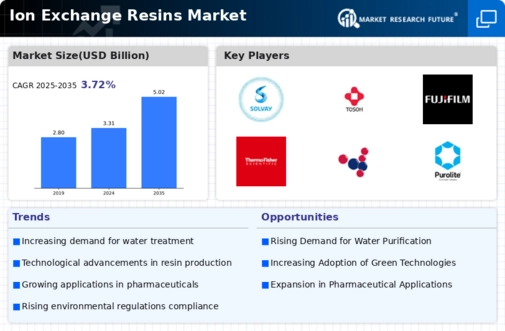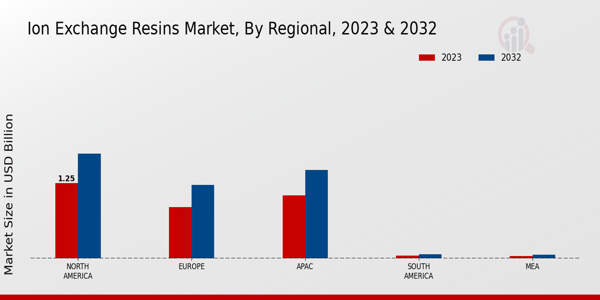Market Analysis
In-depth Analysis of Ion Exchange Resins Market Industry Landscape
The ion exchange resins market is influenced by various market dynamics that impact its growth and trajectory. Ion exchange resins are widely used in industries such as water treatment, pharmaceuticals, food and beverages, power generation, and chemical processing. One of the key factors driving the growth of the ion exchange resins market is the increasing demand for clean and safe water across the globe. As water scarcity becomes a growing concern, the need for efficient water treatment solutions has led to a rise in the adoption of ion exchange resins.
Moreover, the stringent environmental regulations imposed by governments and regulatory bodies regarding water quality and wastewater treatment have also fueled the demand for ion exchange resins. These resins are effective in removing impurities, heavy metals, and contaminants from water, making it suitable for various applications. Additionally, the growing awareness among consumers about the importance of clean water for health and sanitation has further boosted the market for ion exchange resins.
Another significant factor driving market growth is the expanding industrial sector, particularly in developing economies. Industries such as pharmaceuticals, food and beverages, and chemical processing require water of high purity for their manufacturing processes. Ion exchange resins play a crucial role in purifying water and removing unwanted substances, thereby ensuring the quality and safety of the final products. As industrial activities continue to grow, the demand for ion exchange resins is expected to rise correspondingly.
The ion exchange resins are used to remove chlorine, organic compounds, and significant other element and are prepared before industrial usage. Such factors are expected to propel the overall growth of the ion exchange resins industry during the forecast period.
Furthermore, technological advancements and innovations in ion exchange resins have also contributed to market growth. Manufacturers are constantly investing in research and development to improve the performance and efficiency of ion exchange resins. Newer generations of resins with enhanced properties such as higher capacity, faster kinetics, and greater selectivity are being introduced into the market, catering to the evolving needs of various industries.
However, the ion exchange resins market also faces certain challenges that may hinder its growth. One such challenge is the availability of alternative water treatment technologies such as membrane filtration, reverse osmosis, and UV disinfection. These technologies offer alternatives to ion exchange resins and compete with them in the market. Additionally, fluctuations in raw material prices, particularly those of petrochemical-based resins, can impact the cost structure of ion exchange resins, affecting their competitiveness in the market.
Moreover, the ion exchange resins market is highly fragmented, with numerous players operating in the industry. This intense competition can lead to price wars and margin pressures for manufacturers, especially in mature markets. However, it also presents opportunities for innovation and differentiation among market players, as they strive to offer unique products and solutions to gain a competitive edge.
Despite these challenges, the ion exchange resins market is expected to witness steady growth in the coming years, driven by the increasing demand for clean water, stringent environmental regulations, expanding industrial activities, and technological advancements. Market players need to focus on continuous innovation, product differentiation, and strategic partnerships to capitalize on the opportunities in this dynamic market landscape. Additionally, investments in research and development, as well as geographic expansion into emerging markets, can help companies unlock new growth avenues and strengthen their position in the global ion exchange resins market.















Leave a Comment